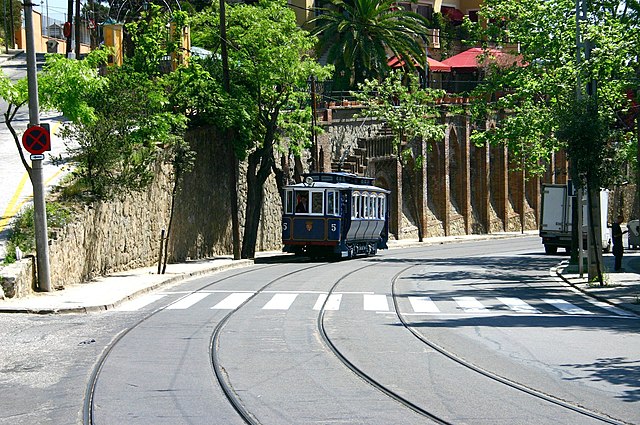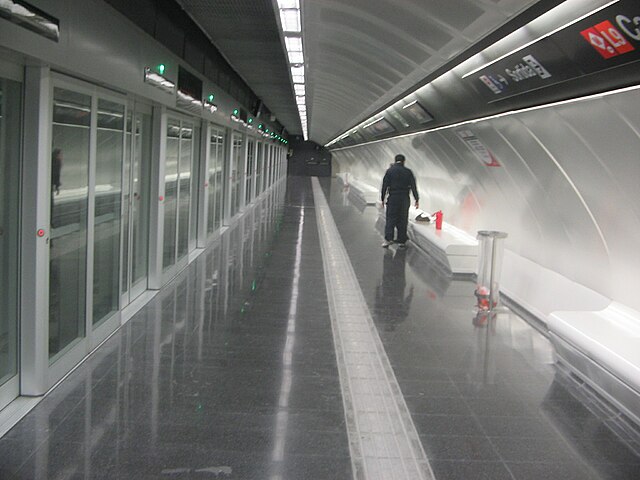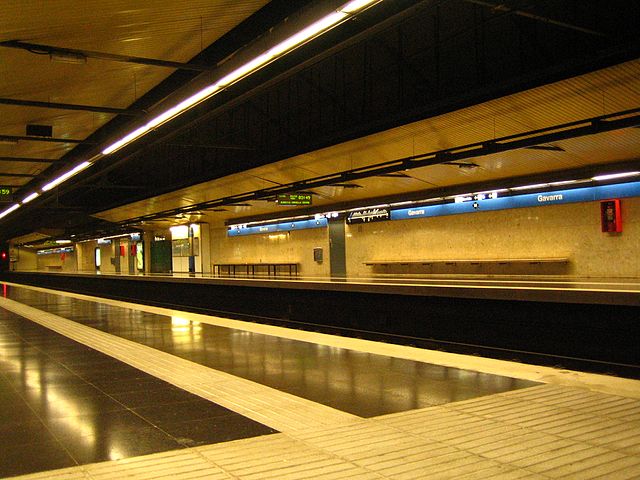Historically, the city of Barcelona, in the Spanish autonomous community of Catalonia, had a large tramway network. The city's first tram line opened in 1872, but almost all of these historic lines had closed by 1971, being replaced by buses and by the expanding Barcelona Metro. The one remaining line, the Tramvia Blau, was retained as tourist attraction, using historic rolling stock. However at the beginning of the 21st century, two new tram systems, the Trambaix and Trambesòs, opened in the suburbs of the city.
Trambaix tram at Palau Reial stop
One of Barcelona's double-decker trams
A PCC car bought second-hand from Washington
Tramvia Blau
The Barcelona Metro is a network of rapid transit electrified railway lines that run mostly underground in central Barcelona and into the city's suburbs. It is part of the larger public transport system of Barcelona, the capital of Catalonia, Spain, with unified fares under the Autoritat del Transport Metropolità (ATM) scheme. As of 2014, the network is operated by two separate companies: Transports Metropolitans de Barcelona (TMB) and Ferrocarrils de la Generalitat de Catalunya (FGC). It is made up of 12 lines, combining the lines owned by the two companies. Two lines, L9 and L10, are being built at present, with both lines having different sections of each opened between 2009 and 2018. They are due to be fully completed in 2026. Three lines on the network have opened as automatic train operation/driverless vehicle systems since 2009: Line 11 being converted to driverless first, and then Lines 9 and 10, opening up driverless.
Can Peixauet station (L9 Nord).
Plaça de Catalunya station (L1)
Universitat station (L1)
Gavarra station (L5)








